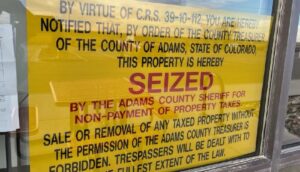The Inflation Reduction Act of 2022 will reduce our country’s carbon emissions by roughly 40% by 2030 while minimizing price shocks caused by volatile fuel prices. The bill will provide over $400 billion to improve energy security and fight climate change, and provides significant incentives for companies to invest in clean assets with predictable operating costs. Most importantly, it provides incentives for individuals and corporate entities to accelerate their transition toward cleaner energy sources.
The bill is complex, but this article summarizes the highlights applicable to the agriculture and forestry industries below. The government-sponsored programs provide tax credits, grants, and loans for emissions reduction and electrification.
AGRICULTURE
Reducing enteric methane emissions
Methane emissions from livestock represent 32% of human-caused emissions in 2021. Reducing these emissions while preserving the competitiveness of farms is a key priority of the IRA. Not only is methane a leading source of climate change, but livestock feed and fertilizers are also hefty economic burdens for farmers. In 2021, total farm production expenses amounted to more than $362 billion. An estimated $56.8 billion were spent on livestock feed and $24.4 billion were spent on fertilizers and soil conditioners.
As inflation, high energy prices, and global demand increase the costs of inputs and operations, farmers will need to implement strategies that decrease feed and fertilizer costs. The Committee on Agriculture, Nutrition, and Forestry of HR 5376 provides incentives that will yield long-term returns on investment while also reducing the environmental footprint of livestock.
Throughout this article, I will be analyzing a hypothetical case study, making assumptions for best-case scenarios for “Farmer Joe’s” 500 cow-dairy farm.
Several government corporations and agencies will invest in funds contributing to tax credits and loans. Priority will be given to proposals that focus on diet and feed management to reduce methane emissions, with tax credits up to 10% of program and input costs through 2026.
For example, total feed costs for a 500-cow dairy farm are about $2.5 million annually. By improving diet and feed management, Joe’s Dairy Farmcan receive up to $250,000 in tax credits, helping offset costs and improve margins.
Rural Electrification Projects
About 15% of agricultural production costs are energy-related, exposing the industry to volatility in energy markets. Transitioning the agriculture industry to renewable energy will increase profitability, income predictability, and climate resilience. Decreased maintenance, fuel, and machinery costs will reduce operational expenses, substantially improving margins.
The Rural Development and Agricultural Credit of HR 5376 provides both grants and loans, summarized below.
Loan Backing
Rural electrification projects are eligible for loan forgiveness of up to 50% of the project cost. For example, if Joe’s Dairy Farm receives the maximum loan of $400,000, up to $200,000 could be forgiven, reducing the out-of-pocket cost of a $1.3 million project to $1.1 million.
Grants and Loans
If your program is a qualifying rural electrification project, grants and loans are available to cover project and technical costs:
-
Technical assistance for outreach, financial training, and agricultural training and support (grants and loans up to 50% of project costs)
-
Storing, supply, and distribution of biofuels (grants up to 75% of project costs)
-
Long-term resiliency, reliability, and affordability of rural electric systems (grants up to 25% of project costs)
Joe’s Dairy Farm which received a loan can additionally apply for the mentioned programs. For example, the administrative overhead for a typical project is approximately 7%, which can be offset by a grant of up to $43,050.
Joe’s Dairy Farm then decides to purchase an anaerobic digester, which turns animal manure and crop residue into biofuel, and also solar water pumps to sustain the farm. Because the $1.2 million anaerobic digester qualifies for the biofuel grant, this number would receive $900,000 in grants.
Installing an anaerobic digester on its own isn’t sufficient – a working system requires a high-pressure water supply. Purchasing solar water pumps qualifies for the long-term resiliency and reliability grant. Joe’s Dairy Farm needs about 35,000 gallons of water each day to operate, requiring 13 solar water pumps. Through this program, the number nets to $307,500 in grants. The savings are summarized below:
|
Program |
IRA Savings Program |
Section |
Type |
Upfront Cost |
Savings |
Net Cost |
|
Annual feed cost |
Diet and feed management |
§21001 |
Grant |
$2,500,000 |
$250,000 |
$2,250,000 |
|
Anaerobic digester |
Biofuels |
§40 |
Grant |
$1,200,000 |
$900,000 |
$300,000 |
|
13 Solar water pumps |
Long-term resiliency, reliability, and affordability |
§22004 |
Credit |
$30,000 |
$30,000 |
$0 |
|
Administrative Overhead |
Technical assistance |
§22002 |
Grant |
$86,100 |
$43,050 |
$43,050 |
|
Loans |
§22001 |
Forgiveness |
$200,000 |
$(200,000) |
||
|
$ 3,816,100 |
$ 1,173,050 |
$ 2,393,050 |
FORESTRY
National Forest Land
Privately-owned forest landowners own about 445 million acres of federal forest land. The bill will also invest a total of $200 million in vegetation management and environmental reviews. You can receive tax credits for improving your forestry landscape. Types of vegetation management include prescribed fires ($125 – $175 per acre), herbicide application ($50 – $250 per acre), and more.
Non-Federal Forest Land
If you are an underserved farmer with 100,000 acres of land, where only 60,000 acres are used as farmland, the other 40,000 acres of land can be transformed into forests. The US defines forest land as one acre or greater in size and has at least 10% tree cover OR formerly had such tree cover and is capable of re-growing those trees. Tree reforestation costs on average $400 – $900 per acre depending on the region.
Forest landowners will be eligible for the following grants:
-
All underserved landowners ($150 million)
-
Underserved landowners in emerging private markets ($150 million)
-
Landowners who own less than 2500 acres ($100 million)
-
Other grants for states to allocate ($50 million)
The bill provides significant incentives for farmers to invest in sustainable projects to yield long-term ROI amidst rising operating costs, where total savings will be up to 50% of the initial project costs. Taking advantage of these tax credits will require real capital investment into renewable energy operations. Actual’s ESG Transformation Platform can provide your company with the tools necessary to model, plan and implement this transformation.




